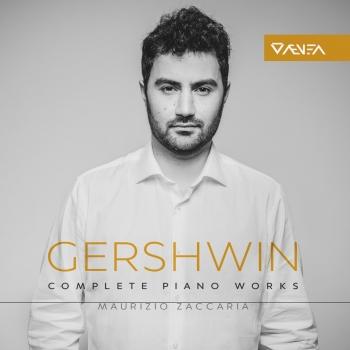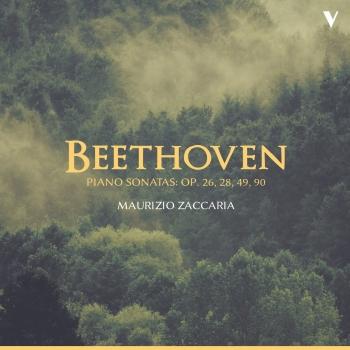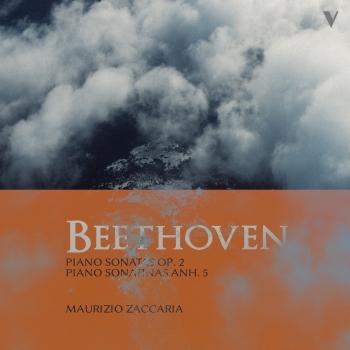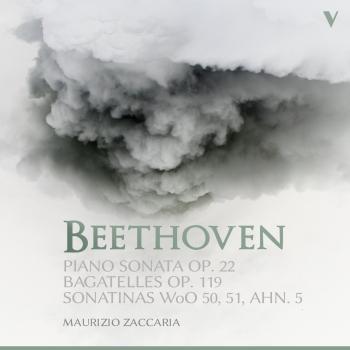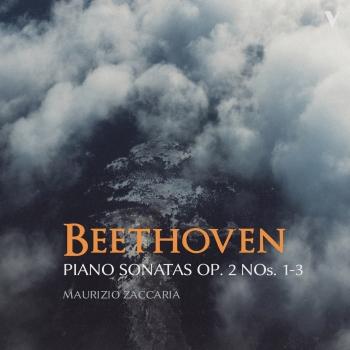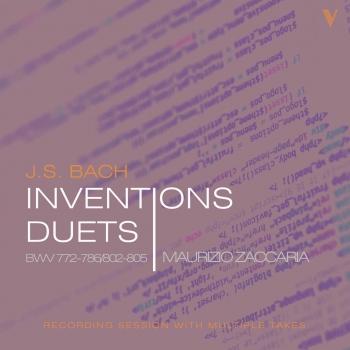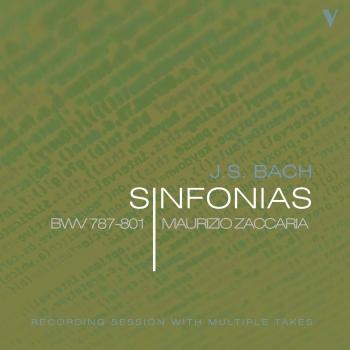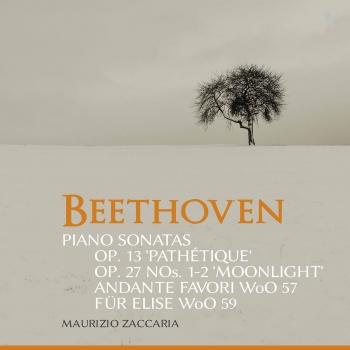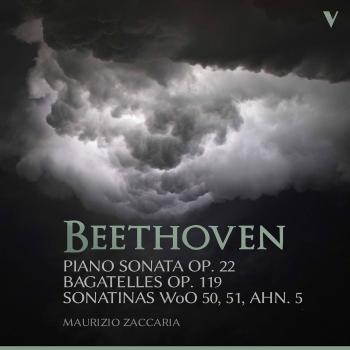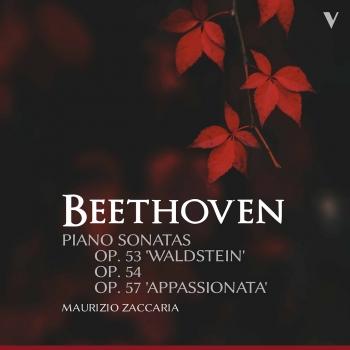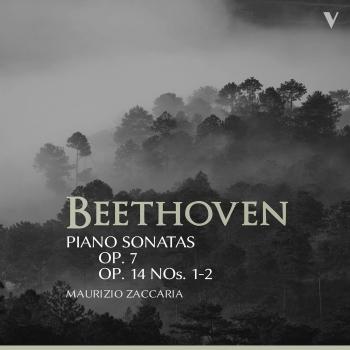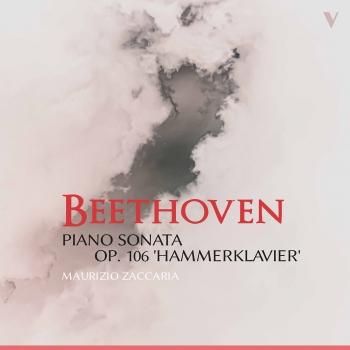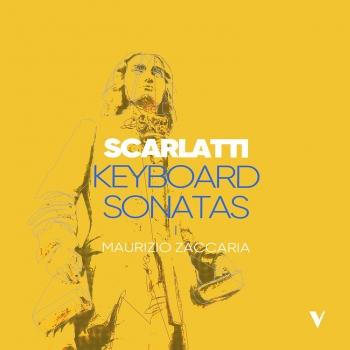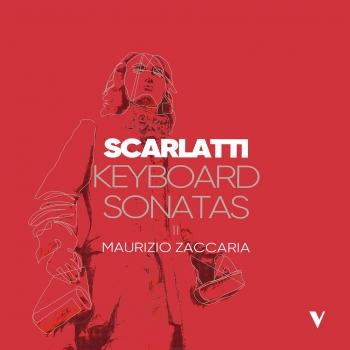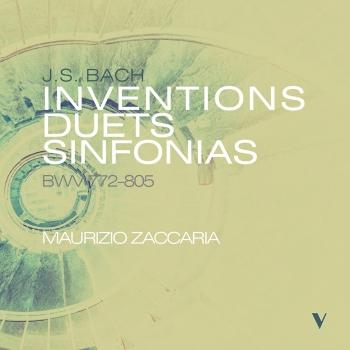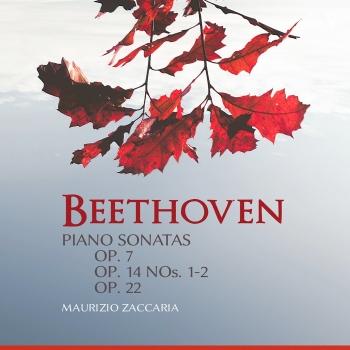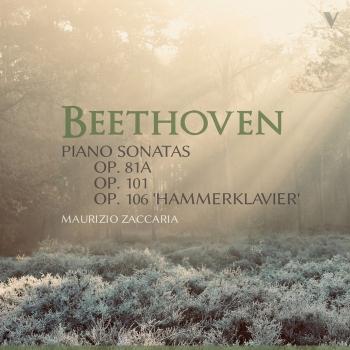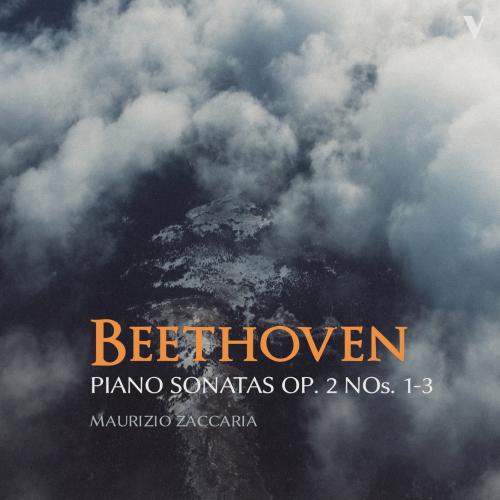
Beethoven: Piano Sonatas, Op. 2 Nos. 1-3 Maurizio Zaccaria
Album info
Album-Release:
2019
HRA-Release:
08.08.2019
Label: OnClassical
Genre: Classical
Subgenre: Instrumental
Artist: Maurizio Zaccaria
Composer: Ludwig van Beethoven (1770–1827)
Album including Album cover
- Ludwig van Beethoven (1770 - 1827): Piano Sonata No. 1 in F Minor, Op. 2 No. 1:
- 1 Piano Sonata No. 1 in F Minor, Op. 2 No. 1: I. Allegro 03:29
- 2 Piano Sonata No. 1 in F Minor, Op. 2 No. 1: II. Adagio 05:17
- 3 Piano Sonata No. 1 in F Minor, Op. 2 No. 1: III. Menuetto. Allegretto 03:19
- 4 Piano Sonata No. 1 in F Minor, Op. 2 No. 1: IV. Prestissimo 04:36
- Piano Sonata No. 2 in A Major, Op. 2 No. 2:
- 5 Piano Sonata No. 2 in A Major, Op. 2 No. 2: I. Allegro vivace 06:39
- 6 Piano Sonata No. 2 in A Major, Op. 2 No. 2: II. Largo appassionato 07:36
- 7 Piano Sonata No. 2 in A Major, Op. 2 No. 2: III. Scherzo. Allegro 03:07
- 8 Piano Sonata No. 2 in A Major, Op. 2 No. 2: IV. Rondo. Grazioso 06:57
- Piano Sonata No. 3 in C Major, Op. 2 No. 3:
- 9 Piano Sonata No. 3 in C Major, Op. 2 No. 3: I. Allegro con brio 09:55
- 10 Piano Sonata No. 3 in C Major, Op. 2 No. 3: II. Adagio 07:20
- 11 Piano Sonata No. 3 in C Major, Op. 2 No. 3: III. Scherzo. Allegro 03:10
- 12 Piano Sonata No. 3 in C Major, Op. 2 No. 3: IV. Allegro assai 05:07
Info for Beethoven: Piano Sonatas, Op. 2 Nos. 1-3
Beethoven’s Opus 2, published in Wien in March 1796, is the first work in which the composer’s strong personality is declared.
Accordingly to Carli Ballola, Piano Sonatas Op. 2 are the manifesto of the style that the composer achieved in the early XVIII century and that will be characterizing of the following years: this is, according to Lenz, the so-called "Early Beethovenian period".
Important aspects affect the form: the Sonatas are now - differently from Haydn, Clementi and Mozart’s Sonatas - structured in four movements. For the first time, Beethoven starts an expansion and a development of the forma-sonata, concerning to the structure of dynamics and rhythm, and to the dialectic of transitions; it follows that the treatment of the pianistic matter turns out to be more psychological than reminding to a frivolous style.
About Maurizio Zaccaria (AE17032 Gerhswin, G.: Complete Published Piano Works; AE15003 Massenet, J.: Complete Piano Works; OC18011B Beethoven, L. Van: Piano Sonatas Opp. 26, 28, 49, 90) renowned pianist Aldo Ciccolini wrote "he is a pianist endowed with rare technical and musical means."
The recording has been made using a pair of Brüel & Kjær microphones combined with Prism Sound equipment, and a brand-new Steinway D-274.
Maurizio Zaccaria, piano
Maurizio Zaccaria
After a diploma in piano at "Niccola Piccinni" Conservatory of Music in Bari under the guidance of Gregorio Goffredo and a master at "Nino Rota" Conservatory of Music in Monopoli under the guidance of Benedetto Lupo, he attended the masterclasses of Marisa Somma, Cristian Zaccarias, Joaquin Achucarro, Francois J. Thiollier, Konstantin Bogino et Aldo Ciccolini.
He went on to win several national and international piano competitions: Rachmaninoff International Piano Competition, Liszt International Piano Competition (the famous Argentine pianist Martha Argerich was in the jury), Thalberg International Piano Competition, International Music Competition in Ibla, "San Nicolaus" International Piano Competition International, Piano Festival in Osnabruch (Germania), Cliburn Piano Competition in Texas (USA). In 2008 he was awarded the "Umanitaria" Society price in Milan (president Maestro Abbado); during the same year he was also awarded the Arts Price of the Italian Cultural Ministry, after which he played at the Parco della Musica in Rome. He plays in Italy and abroad in some important halls: Auditorium della Radio Televisione Svizzera (Lugano); Salle Cortot (Paris); Institut Italien de Culture (Paris); Sala Gaber (Milan); Parco della Musica (Rome); Sala Scarlatti (Naples); Teatro delle Muse (Ancona); Teatro Piccinni et Kursaal Santa Lucia (Bari); Teatro Bibiena (Mantova); Villa Ruffolo (Ravello); Teatro Wan Vesterhout (Mola di Bari); Auditorium V. Falco (playing two pianos with Aldo Ciccolini); Teatro Curci (Bari). Maurizio Zaccaria plays for important associations: Fondazione Petruzzelli (Bari); URTIcanti contemporary music festival; Ravello festival; PianoFestival (Grosseto); A.R.A.M. (Rome); Gaeta Festival; Accademia dei Cameristi (Bari). In March 2007 he debuted in the USA, during a series of concerts playing Bartok's compositions, among which his Sonata for two pianos and percussions. His last concerts with Bari Concert Society orchestra and Taranto Magna Grecia orchestra, respectively devoted to Shostakovic's Concerto Op. 35 and Rachmaninoff's Third Concerto Op. 30 have fascinated audience and critics. He played as a soloist with Petruzzelli Symphonic Orchestra, (Bari), "Nino Rota" orchestra (Monopoli, Bari) conducted by Filippo Maria Bressan, with Cosenza Symphonic orchestra, Bacau symphonic orchestra, Matera Duni Orchestra (there he played Gershwin's best symphonic pieces for piano, Concerto in Fa and Rapsody in Blue) and with Bari Metropolitan Symphonic orchestra. He was invited by the Italian embassy in Pogdorica where he played music by Fauré, Debussy and Schostakovic. He is also a composer, and he debuted some compositions by Goeffroy Drouin, Luca Lombardi, Lera Auerbach, Luca Mosca, Andrea Marena and Fabio Vacchi. He also pays chamber music and he collaborates with flutist Leonardo Grittani.
This album contains no booklet.












